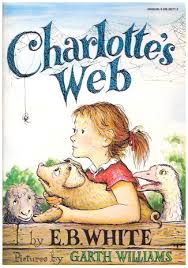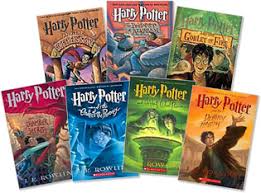Dear Alison,
You're right. Sometimes all your story needs is a new POV. A change of perspective to really nail the storyline. Do you want to know a secret? Months ago, I wrote a Point of View post--I never published it because well... I'm not sure why, but I'm glad I didn't because it's the perfect post to follow your POINT OF VIEW and Stories that JUST WON'T DIE post.
In my past life as a high school English teacher, I spent a lot of time on Point of View. I taught my students (and I believe it now more than ever) that Point of View is one of the most important literary devices to consider when writing your story.
Think of Point of View as a camera lens. As the writer, you decide what view or perspective of the story you want the reader to experience.

The Three Main Points of View (POV) include First person, Second Person, and Third Person. You are the Director. You decide what POV you want for your story.
Sure my main character is named Tiffani and she might be twenty-two and a diner waitress, but I bet when she drinks her glass of wine you start relaxing with her.
First Person POV works well in all forms of fiction--I don't care what the age or genre of the story. For readers who like to immerse themselves in the story, First Person POV is the way to go.
But it does have drawbacks. The writer is limited to one POV for an entire book or at least a chapter.
Any POV requires the writer to mix up her writing with varying sentence structure so the reader doesn't get bored, but it's especially important with First Person.
"When I wake up, the other side of the bed is cold. My fingers stretch out seeking Prim's warmth but finding only the rough canvas cover of the mattress. She must have had bad dreams and climbed in bed with our mother. Of course, she did. This is the day of the reaping."
--excerpt from The Hunger Games by Suzanne Collins
Collins could have said, "When I wake up, I find the other side of the bed cold. I reach out to search for Prim but I can't find her. I think she had a bad dream and she needed our mother's comfort." ----BLEECH!!!! Boring, self-center, and mediocre writing.
Collins created an intense First POV that sucked the reader in by varying the sentence structure and using action, rather than telling the reader what the MC did.
SECOND PERSON
Second Person creates a relationship between the narrator and the reader whereby the reader can't help but feel that the narrator is speaking directly to them. Second Person is not as common in fiction.
While Catcher in the Rye is written in the First Person, Past Tense. The first few lines slip into Second Person.
"If you really want to hear about it, the first thing you'll probably want o know is where I was born, and what my lousy childhood was like, and how my parents were occupied and all before they had me, and all that David Copperfield kind of crap..."
--excerpt from Catcher in the Rye by J.D. Salinger
In Second Person, the writer is speaking directly to you. Here's another example.
"If you are going to be a ballerina, you have to do more than wear a tutu and dream about dancing."
---excerpt from Vampirina Ballerina by Anne Marie Pace
A Second Person POV is difficult to maintain for the duration of a MG or YA Novel. Most writers intentionally slip into the Second Person POV once and a while to really speak to their readers, but then redirect their readers back to their Main POV.
THIRD PERSON OMNISCIENT: The narrator knows EVERYTHING that's going on in the story. The narrator is OZ, Yoda, Buddha--all knowing. The narrator knows things that the characters don't. The narrator can comment on the events of the story and knows exactly what's going on in the minds of every character--a creepy, stalkery all-knowing being.
My favorite 3rd Person Omniscient and the book that hooked me as a reader...

"Wilbur never forgot Charlotte. Although he loved her children and grandchildren dearly, none of the new aspirers ever quite took her place in his heart. She was in a class by herself. It is not often that someone comes along who is a true friend and a good writer. Charlotte was both."
--end of Charlotte's Web by E.B. White
THIRD PERSON LIMITED: POV is limited to ONE character. The reader only knows what the narrator knows because the narrator only knows what the character knows. Depending on writer preference, 3rd Person Limited can be right inside the character's head or from a bit more distance, say from across the room.
The most well-known and loved 3rd Person Limited POV is the Harry Potter series. J.K. Rowling rarely slipped into another character's Point of View. She relied on Harry to share what was going on around him and therefore had to constantly filter what the reader should and shouldn't know about Harry's world based solely on his knowledge and experience.

THIRD PERSON MULTIPLE: The narrator follows multiple characters in the story, depending on the scene or chapter. When done well, the reader realizes the character perspective has switched. --Typically at chapter or section breaks.
You're right. Sometimes all your story needs is a new POV. A change of perspective to really nail the storyline. Do you want to know a secret? Months ago, I wrote a Point of View post--I never published it because well... I'm not sure why, but I'm glad I didn't because it's the perfect post to follow your POINT OF VIEW and Stories that JUST WON'T DIE post.
In my past life as a high school English teacher, I spent a lot of time on Point of View. I taught my students (and I believe it now more than ever) that Point of View is one of the most important literary devices to consider when writing your story.
Think of Point of View as a camera lens. As the writer, you decide what view or perspective of the story you want the reader to experience.
The Three Main Points of View (POV) include First person, Second Person, and Third Person. You are the Director. You decide what POV you want for your story.
FIRST PERSON
First Person allows the author to inject the reader into the story. First person creates immediacy and authenticity.Sure my main character is named Tiffani and she might be twenty-two and a diner waitress, but I bet when she drinks her glass of wine you start relaxing with her.
But it does have drawbacks. The writer is limited to one POV for an entire book or at least a chapter.
BEWARE the “I” Trap
It's easy to fall into the "I" trap: "I ran to the store. I paid the cashier fifty dollars for the food. I ran home."Any POV requires the writer to mix up her writing with varying sentence structure so the reader doesn't get bored, but it's especially important with First Person.
"When I wake up, the other side of the bed is cold. My fingers stretch out seeking Prim's warmth but finding only the rough canvas cover of the mattress. She must have had bad dreams and climbed in bed with our mother. Of course, she did. This is the day of the reaping."
--excerpt from The Hunger Games by Suzanne Collins
Collins could have said, "When I wake up, I find the other side of the bed cold. I reach out to search for Prim but I can't find her. I think she had a bad dream and she needed our mother's comfort." ----BLEECH!!!! Boring, self-center, and mediocre writing.
Collins created an intense First POV that sucked the reader in by varying the sentence structure and using action, rather than telling the reader what the MC did.
SECOND PERSON
Second Person creates a relationship between the narrator and the reader whereby the reader can't help but feel that the narrator is speaking directly to them. Second Person is not as common in fiction.
While Catcher in the Rye is written in the First Person, Past Tense. The first few lines slip into Second Person.
"If you really want to hear about it, the first thing you'll probably want o know is where I was born, and what my lousy childhood was like, and how my parents were occupied and all before they had me, and all that David Copperfield kind of crap..."
--excerpt from Catcher in the Rye by J.D. Salinger
In Second Person, the writer is speaking directly to you. Here's another example.
"If you are going to be a ballerina, you have to do more than wear a tutu and dream about dancing."
---excerpt from Vampirina Ballerina by Anne Marie Pace
A Second Person POV is difficult to maintain for the duration of a MG or YA Novel. Most writers intentionally slip into the Second Person POV once and a while to really speak to their readers, but then redirect their readers back to their Main POV.
THIRD PERSON
Third Person provides the writer storytelling freedom. She doesn't need to rely on a single character to share the story. Writers use he, she, it, or they pronouns. (I could get into the whole singular and plural pronoun usage, but I'm just giving a quick overview of choices--not a grammar lesson.)THIRD PERSON OMNISCIENT: The narrator knows EVERYTHING that's going on in the story. The narrator is OZ, Yoda, Buddha--all knowing. The narrator knows things that the characters don't. The narrator can comment on the events of the story and knows exactly what's going on in the minds of every character--a creepy, stalkery all-knowing being.
My favorite 3rd Person Omniscient and the book that hooked me as a reader...
"Wilbur never forgot Charlotte. Although he loved her children and grandchildren dearly, none of the new aspirers ever quite took her place in his heart. She was in a class by herself. It is not often that someone comes along who is a true friend and a good writer. Charlotte was both."
--end of Charlotte's Web by E.B. White
THIRD PERSON LIMITED: POV is limited to ONE character. The reader only knows what the narrator knows because the narrator only knows what the character knows. Depending on writer preference, 3rd Person Limited can be right inside the character's head or from a bit more distance, say from across the room.
The most well-known and loved 3rd Person Limited POV is the Harry Potter series. J.K. Rowling rarely slipped into another character's Point of View. She relied on Harry to share what was going on around him and therefore had to constantly filter what the reader should and shouldn't know about Harry's world based solely on his knowledge and experience.
THIRD PERSON MULTIPLE: The narrator follows multiple characters in the story, depending on the scene or chapter. When done well, the reader realizes the character perspective has switched. --Typically at chapter or section breaks.
Probably the most well known 3rd Person Multiple: Game of Thrones by George R.R. Martin
So really Alison, it depends on what you want the reader to know and what you want the reader to experience. Do you want the reader to be up close and personal with one character or several characters or do you want the reader to experience a wider frame of the story? Or maybe you want them to feel like Yoda. I love feeling like Yoda sometimes but other times I want to be diving into the water with my favorite character. I prefer the First Person Present Tense for most of my YA stories, but I'm experimenting with 3rd Person Multiple on another WIP. As writers, we should stretch ourselves from time to time and if a story JUST WON'T DIE, sometimes it just needs a new POV!
Sharing the writing love one letter at a time,
Kim


Comments
Post a Comment
Thanks for commenting!